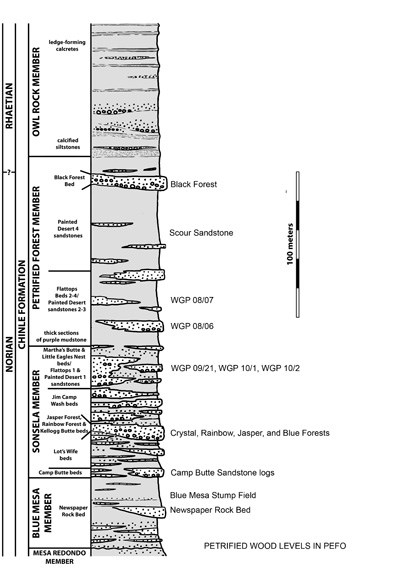
NPS The park paleontologist comments that every single log would have to be thin sectioned and that sample examined microscopically to determine its genus and species as you just can’t tell with the naked eye. Identification of the tree species requires microscopic examination of thin sections of the xylem tissue. Based solely on the xylem structure of permineralized wood (including resin canals, rays and tracheid pitting), and without seed cones or DNA evidence, it is difficult to be certain which trees in the park are related to what living trees in our world. Some have suggested that the name “Agathoxylon” be used, but eventually that name will experience the same issues as Araucarioxylon. We currently recognize 14 different species of wood in the park and there were probably many more. To date we have recovered wood from nine different geologic levels in the park with millions of years separating these layers. No doubt over time the types of trees in the environment changed. All of our recent wood work has been done by Dr. Rodney Savidge of the University of New Brunswick. He is currently studying more samples that the park paleontologist has collected and sent to him from the various geological levels. http://chinleana.blogspot.com/2011/01/agathoxylon-wood-morphogenus-previously.html Some of the recent tree species in the park named by Dr. Rodney Savidge: Pullisilvaxylon arizonicum Pullisilvaxylon daughertii Chinleoxylon knowltonii |
Last updated: May 19, 2024
